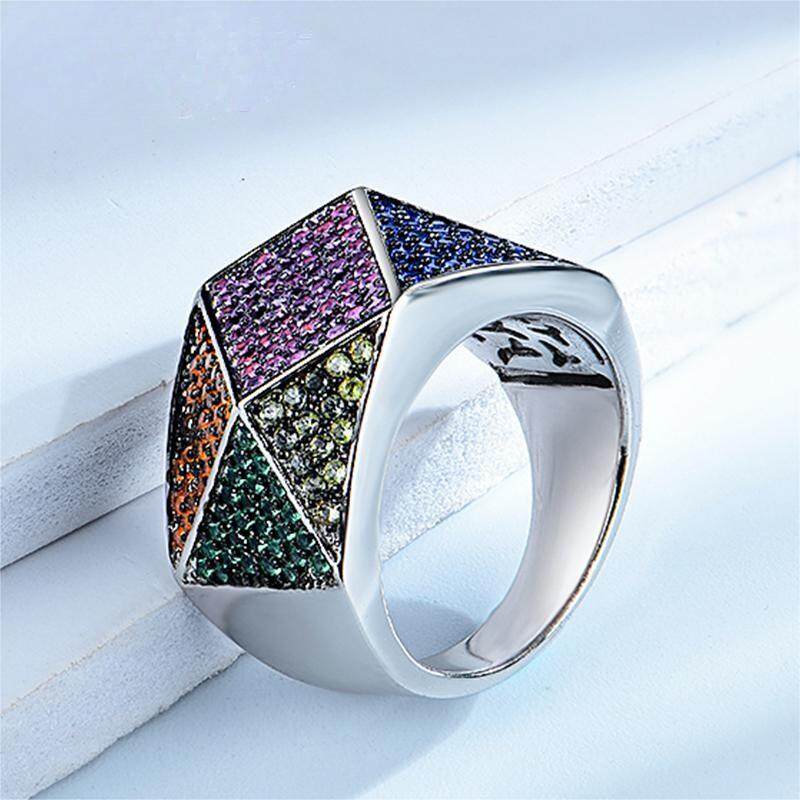
Email format error
Email cannot be empty
Email already exists
6-20 characters(letters plus numbers only)
The password is inconsistent
Email format error
Email cannot be empty
Email does not exist
6-20 characters(letters plus numbers only)
The password is inconsistent


In the realm of jewelry, the choice of material holds paramount importance, dictating not only the aesthetics but also the durability and functionality of the piece. When it comes to rings, two prominent materials often come into play: stainless steel and iron. In this discourse, we delve into the intricate interplay of material properties and composition, durability and corrosion resistance, aesthetics and finishes, and the economic considerations surrounding stainless steel and iron rings.
Material Properties and Composition
At the core of understanding stainless steel and iron rings lies a comprehension of their chemical composition and physical attributes. Stainless steel, a steel alloy, is primarily composed of iron, carbon, chromium, and other alloying elements. This composition renders stainless steel highly resistant to corrosion and rust, making it an ideal choice for jewelry that requires longevity and resilience.
Conversely, iron in its elemental form lacks the inherent corrosion resistance of stainless steel. While pure iron possesses magnetic properties and is relatively softer compared to stainless steel, its susceptibility to rust necessitates protective coatings or treatments to maintain its integrity over time.

Durability and Corrosion Resistance
The durability and corrosion resistance of rings made from stainless steel and iron are starkly contrasting. Stainless steel, fortified with chromium, exhibits remarkable resistance to rust and corrosion even under the most adverse environmental conditions. Whether subjected to moisture, chemicals, or wear, stainless steel rings retain their luster and structural integrity with minimal upkeep.
On the other hand, iron rings, while possessing their own rustic charm, are prone to rust and corrosion, particularly in humid or corrosive environments. Without adequate protection or maintenance, iron rings may succumb to the relentless forces of oxidation, gradually losing their appeal and structural stability.
Aesthetics and Finishes
The aesthetic allure of stainless steel and iron rings lies in their distinct characteristics and finishing options. Stainless steel rings exude a sleek and modern appeal, available in a myriad of finishes ranging from polished to brushed or matte. Furthermore, stainless steel's versatility allows for intricate designs and surface treatments, enabling customization tailored to individual preferences.
In contrast, iron rings evoke a sense of tradition and timelessness, with their classic appearance and propensity to develop a natural patina over time. While surface treatments for iron rings are comparatively limited due to their susceptibility to corrosion, the gradual patina formation adds a unique dimension to the ring's aesthetics, reflecting the wearer's journey and experiences.
Cost and Accessibility
The economic considerations surrounding stainless steel and iron rings encompass material expenses, manufacturing processes, and market demand. Stainless steel rings, owing to their lower material costs and cost-effective manufacturing processes, are generally more affordable and accessible to consumers. Additionally, the enduring popularity of stainless steel jewelry further enhances its affordability and widespread availability in the market.
In contrast, the pricing of iron rings may vary depending on factors such as purity, additional alloying elements, and craftsmanship. While certain segments of the market may appreciate the rustic charm and authenticity of iron rings, the higher maintenance costs associated with preventing corrosion may deter some consumers, impacting its accessibility in comparison to stainless steel rings.
In conclusion, the choice between stainless steel and iron rings encompasses a multifaceted evaluation of material properties, durability, aesthetics, and economic considerations. While stainless steel reigns supreme in terms of corrosion resistance, versatility, and affordability, iron rings captivate with their timeless appeal and inherent charm. Ultimately, the decision rests upon the preferences and priorities of the wearer, whether they prioritize longevity, aesthetics, or the intrinsic allure of tradition and heritage.